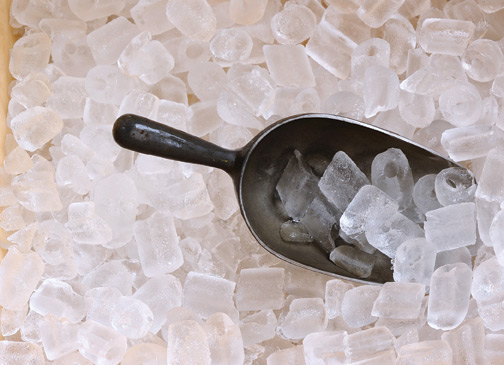Researchers find pathogens in hospital ice machines

Ice machines in hospitals are often contaminated with pathogens that can cause serious nosocomial infections, according to study results.
Anubhav Kanwar, MD, physician at University Hospitals Cleveland Medical Center and Cleveland Veterans Affairs Medical Center, and colleagues tested dozens of ice machines in health care facilities and found they were frequently contaminated with gram-negative bacilli and Candida species.
“Although contaminated ice machines have been linked to pathogen transmission, few data are available on the frequency and sites of contamination of ice machines in health care facilities,” they wrote in Infection Control & Hospital Epidemiology. “Moreover, the mechanisms by which microorganisms might be transferred from contaminated ice machines to patients are unclear.”
Kanwar and colleagues swabbed the drain pans, ice and water chutes of 64 ice machines in five hospitals and two nursing homes in Cleveland and cultured the samples to determine how often and where the machines were contaminated. They visually inspected drain pans for standing water, ice cubes, grime and signs of biofilm formation. The researchers also assessed the ice and water chutes for grime and the area around the machines for water splatter. They observed people using the machines to see how the pathogens might be dispersed.
The machines were located in medical units (n = 29), surgical units (n = 19), ICUs (n = 11) and in combined medical and surgical units (n = 5). All but one had stagnant water in the drain pans. Kanwar and colleagues observed machines that dripped water when not in use, machines with drains blocked by ice, machines that splattered water onto surrounding countertops and floors and machines with visible grime and slime layers.
Gram-negative bacilli or Candida species, or both, were recovered from all 64 drain pans, 72% of drain pan grills and more than half of ice and water chutes, or both. Kanwar and colleagues said ice often fell through drain pan grills, splattering contaminated water onto cups and the hands of people using the machines. They watched 18 people using the machines, including 13 nurses, two nursing aids, two physicians and one patient. According to their observations, individuals’ hands often made contact with the ice or water chutes or falling ice, “suggesting a potential route by which personnel might transfer pathogens to ice machines,” they wrote.
“Our findings suggest that the mechanism of dispersal of pathogens from ice machines is analogous to the mechanism of dispersal from contaminated sink drains,” Kanwar and colleagues wrote. “We have demonstrated that Candida species also frequently colonize hospital sinks and are similarly dispersed. Although ice machines have not been linked to Candida infections, our finding of frequent Candida species contamination suggests the potential for these devices to serve a source for transmission. Notably, the microbial flora of the ice machines sampled in the study facilities may not be generalizable to other hospitals and may depend on the local prevalence of antibiotic-resistant organisms.”
They said regularly scheduled cleaning of ice machines has been recommended to prevent the dispersal of pathogens but that “optimal standardized approaches” need to be developed. – by Gerard Gallagher
Disclosures: Kanwar reports no relevant financial disclosures. Please see the study for all other authors’ relevant financial disclosures.
